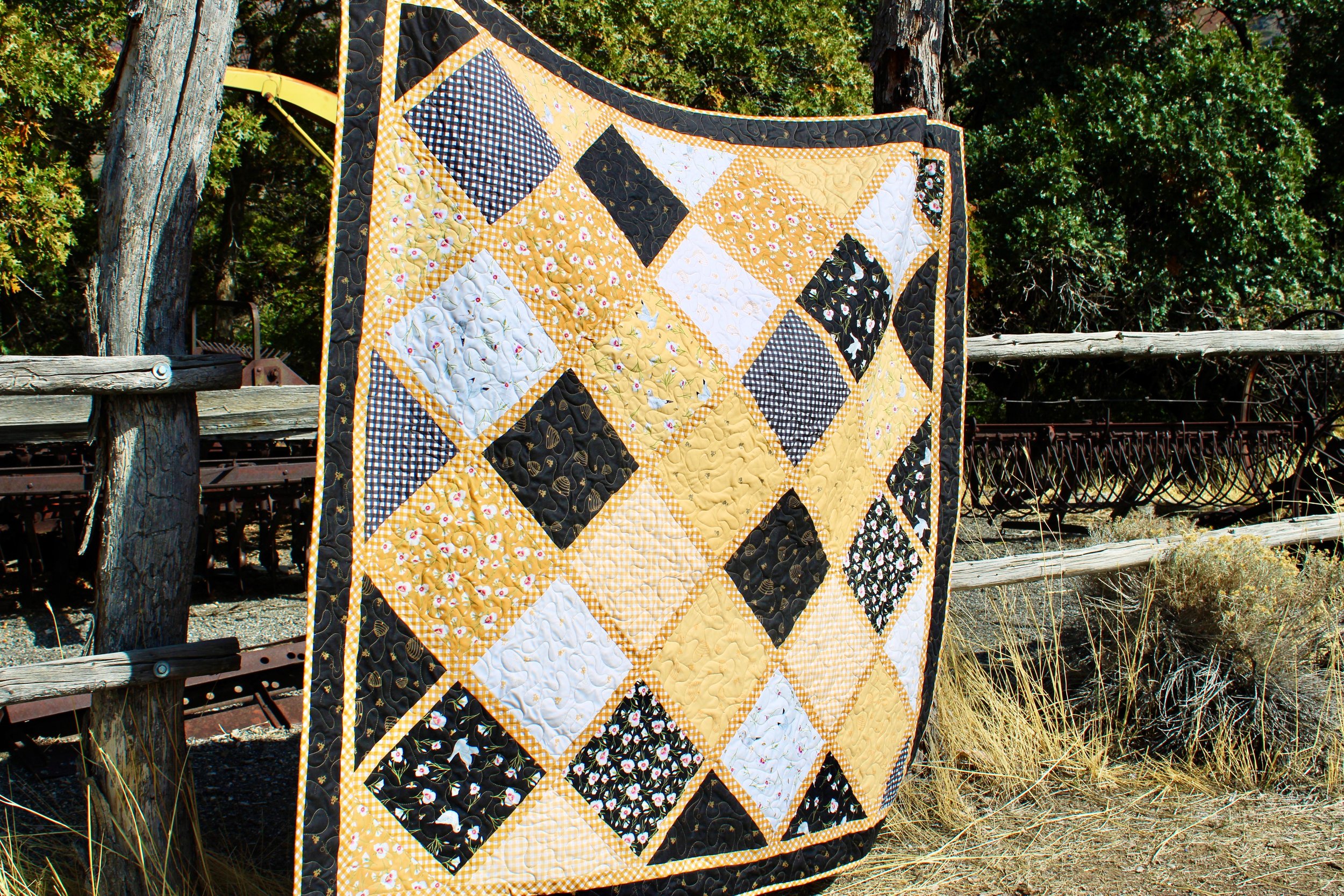Precut Friendly Lattice Quilt Tutorial
Well, who doesn’t love to cuddle up with a quilt in the fall? This is such a fun time to be sewing, but it’s also a super busy time of the year, which is why I was excited to have some 10” stackers of The Beehive State fabric to play with!
I love quilting with precuts because they can be a huge timesaver, and because they allow me to play with all of the fabrics in a favorite collection.
I wanted a large throw quilt, which could double as a picnic/soccer game quilt. This one ended up measuring 66” x 66”; perfect for what I needed. You can always add more rows to make it larger, or take away rows for a smaller quilt. While I used 10” squares for my quilt, any size squares will work just fine.
These particular fabrics come from The Beehive State collection designed by Shaeleen Louise for Riley Blake Designs.
To make this quilt, you will need:
two 10” stackers of Beehive State by Shaeleen Louise for Riley Blake Designs
1-1/4 yard Beehive State Butterscotch Gingham fabric for sashing and inner border, cut into 1.5” strips, then sub cut ten of the strips into thirty-two 10” x 1.5” strips.
1 yard Beehive State Black Bees fabric for outer border, cut into 3.5” strips
1/2 yard Beehive State Butterscotch Gingham fabric for binding, cut into 2.5” strips
5.7 yards fabric for quilt back in Bee Cross Stitch Butterscotch
For a step-by-step tutorial, watch the video above.
When I saw the sego lilies in this fabric line, I knew I wanted to sew with it. I remember reading the story of my great grandfather Joachim Johannesson Heder, who crossed the ocean from Sweden to America with his family, after which they crossed the plains on foot all the way to Utah. Here is a portion of the story in his words:
Somewhere close to 3 months, altogether, my folks and the other families just like us, pushed and pulled [our handcart], over 1,200 miles. The adults and older kids walked every step of the way through all kinds of weather, Indian raids, sickness and privation and we arrived in November of 1863 with little or no food and almost too weary to care. Father had traded our hand cart, and as we approached our temporary shelter still a half mile away, Mother, so tired she had to have some relief for her aching arms, put down the iron kettle that contained our remaining food… (a couple pounds of rice) behind a bush and carried the rest of her burden of clothing and bedding to the shelter. When she returned for the rice she found nothing… someone needed it worse than we did, I guess, and had taken it, kettle and all. And that’s what we had for supper… nothing! With aching legs and my belly trying to eat itself, I curled up in a corner of the small, adobe shelter and slept, oblivious to all around me. This new land was awful far across! And it may be a land of opportunity but I hadn’t seen much opportunity yet; just hunger, cold, and tired legs!
Back to the present, dawn was just breaking when Father called us kids to come help him search for sego lilies. “What do we need lilies for?” I couldn’t help asking. “The bulbs are good to eat son; we have nothing else.” We walked a long way and only found a few as they were hard to find in December, the long slender leaves and flower that marked their whereabouts in Spring and Summer were all dried up and lay flat against the ground among the weeds. We did find a few Oregon grapes that were dried on the bushes like raisins. It was a pitiful meal we had that morning on which to start hunting for work and better shelter.
We found no paying jobs but were able to glean a wheat field for a little wheat which we ground in an old coffee mill Father had found back along the trail near Florence Nebraska. We eventually found work… digging carrots and butchering some pigs that we were all grateful for. Along with the wages of the day we were also given some carrots and pig skins, which cooked with the wheat made mighty fine eaten’ and a very, very welcome change!
I think of this story every time I see a sego lily.
I finished the quilt with a binding in the same butterscotch gingham that I used for the sashing and inner border. I love how repeating it in the binding ties it all together! The quilt back is made with Butterscotch Bee Cross Stitch by Lori Holt, also from Riley Blake Designs.
I debated on how I would quilt this, but settled on a simple meandering design using a butterscotch quilting thread.
I opted for the meandering design because it, and the butterscotch thread color, actually mimic the little dotted line in the bee print, indicating its flight pattern.
I’m loving how this turned out! Classic and simple! Again, this can be made with any size squares, so customize it any way you want — the technique remains the same. I hope you enjoyed this tutorial! Be sure to subscribe to my YouTube Channel and follow me on Instagram — and share your quilt using @bayhillstudio — I’d love to see and share your work! And most importantly, I wish you a very blessed day!









